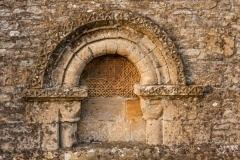Civil parish Turkdean Post town CHELTENHAM Dialling code 01451 | Sovereign state United Kingdom Postcode district GL54 | |
 | ||
Turkdean is a village and civil parish in Gloucestershire, England, approximately 30 km (20 mi) to the east of Gloucester. It lies in the Cotswolds, an Area of Outstanding Natural Beauty.
Contents
Map of Turkdean, Cheltenham, UK
History
Turkdean was recorded as Turcandene in the 8th century and was listed as Turchedene or Turghedene in the Domesday Book of 1086. It derives from the Old English for "valley (denu) of a river called Turce", with Turce or Twrch being a lost Celtic river name, possibly meaning boar.
Governance
Turkdean is part of the Sandywell ward of the district of Cotswold, represented by Councillor Robin Hughes, a member of the Conservative Party. Turkdean is part of the constituency of Cotswold, represented at parliament by Conservative MP Geoffrey Clifton-Brown. It is part of the South West England constituency of the European Parliament.
Geography
Turkdean is in the county of Gloucestershire and lies within the Cotswolds, a range of hills designated an Area of Outstanding Natural Beauty. It is approximately 30 km (20 mi) to the east of Gloucester. It is approximately 21 km (13 mi) east of its post town Cheltenham and about 8 km (5 mi) south-west of Bourton-on-the-Water. The southeastern boundary follows the route of the Roman road the Fosse Way. Nearby villages include Cold Aston, Hazleton, Clapton, Farmington and Hampnett.
In popular culture
In the 1981 film Raiders of the Lost Ark, Harrison Ford's character, archaeologist Indiana Jones mentions the neolithic barrow at Turkdean, near Hazleton, during a lecture. There are two Neolithic long barrows at Hazleton, one of which was excavated over three summer seasons between 1980-1982.
The Channel 4 archaeological television series Time Team made two visits, in 1997 (Time Time Live 1997, repackaged as series 5 episode 4) and 1998 (series 6 episode 9), to excavate a nearby Roman villa site (not the neolithic barrows).
Twrch Trwyth
As previously noted, the term "twrch" in Welsh, denotes "wild boar, hog, mole". So Twrch Trwyth means "the boar Trwyth". Its Irish cognate may be Triath, King of the Swine (Old Irish: Triath ri torcraide) or the Torc Triath mentioned in Lebor Gabála Érenn, also recorded as Old Irish Orc tréith "Triath's boar" in Sanas Cormaic. Rachel Bromwich regards the form Trwyth as a late corruption. In the early text Historia Brittonum, the boar is called Troynt or Troit, a Latinisation likely from the Welsh Trwyd. Further evidence that Trwyd was the correct form appears in a reference in a later poem.
The names of the hound and boar Twrch Trwyth are glimpsed in a piece of geographical onomasticon composed in Latin in the 9th century, the Historia Brittonum. Twrch Trwyth (Welsh pronunciation: [tuːɾχ tɾʊɨθ]; also Latin: Troynt (MSS.HK); Troit (MSS.C1 D G Q); or Terit (MSS. C2 L)) is an enchanted wild boar in the Matter of Britain that King Arthur or his men pursued with the aid of Arthur's dog Cavall (Welsh: Cafall, Latin: Cabal).
